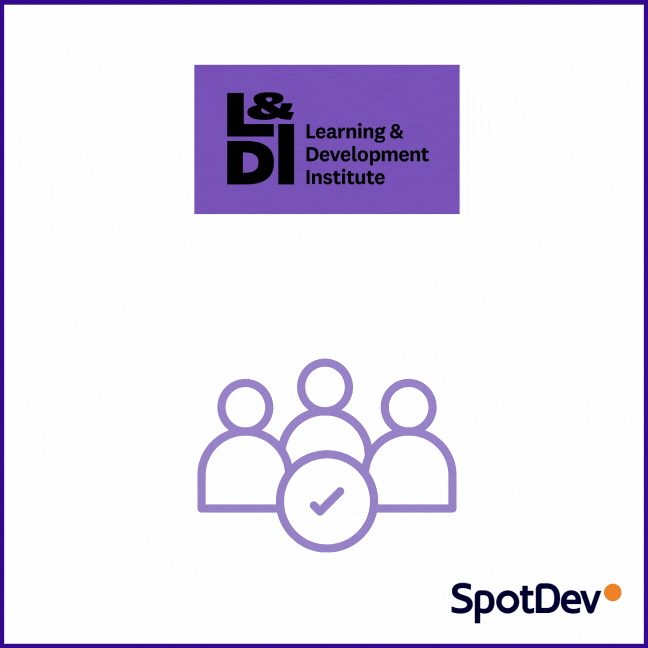Over the years, HubSpot has dramatically expanded its capabilities—not just as a CRM or marketing tool, but as a powerful platform for custom website functionality. Once seen as relatively rigid compared to Webflow or WordPress, HubSpot’s CMS (now called Content Hub) has evolved into a serious contender for businesses looking to build flexible, scalable, and high-performing digital experiences.
From templates to tailored experiences
Historically, HubSpot’s CMS was template-based and fairly restrictive. You could drag and drop elements, but anything beyond that often required workarounds or outside tools. That gap has largely closed.
Today, with features like custom modules, serverless functions, and React components, developers can build highly dynamic features natively in HubSpot—everything from ROI calculators to real-time data visualisations.
HubSpot’s ongoing investment in React, the popular component-based JavaScript library maintained by Meta, opens the door to more sophisticated, app-like website features that integrate directly with CRM data.

Real-time data and CRM UI extensions
Modern websites are expected to be interactive and intelligent. HubSpot now supports CRM UI extensions, which allow custom-built cards and modules to appear directly within the CRM interface—tightly integrating your front-end website experience with backend logic and external data sources. Put simply, your website can work closely with your CRM, using live data from HubSpot or other systems to create a more seamless and dynamic experience for users and teams.
For example, developers can now create features like:
- Currency converters that update in real-time based on user input
- Membership portals with secure login and personalised dashboards
- Dynamic data displays powered by RESTful APIs or GraphQL
These tools not only enhance the user-experience, but also reduce the need for constant manual updates from marketing teams. If CRM data changes—or if an integrated third-party API updates—the changes can cascade automatically across the front-end i.e. If something changes in your CRM or in a connected system, those updates can automatically show up on your website—no need to update it manually.
Success Story: Transforming Superior's website for a modern treasury experience
Performance, accessibility, and SEO—baked in
Custom functionality doesn’t mean sacrificing speed or usability. HubSpot has made significant improvements under the hood to ensure websites run efficiently, including:
- Automatic image conversion to WebP for faster load times
- CSS minification without the need for dev-side intervention
- Built-in SEO scanning tools, reducing reliance on external tools like Semrush
More importantly, performance doesn’t come at the expense of accessibility. HubSpot supports the latest WCAG standards, enabling navigation via keyboard, screen reader compatibility, and visual design considerations like color contrast and font sizing.
Meeting complex requirements
At SpotDev, we've delivered a wide range of advanced web solutions using HubSpot. One standout example is L&DI, a custom learning management system built entirely within HubSpot. It features:
- Membership registration and payments
- Event and webinar ticketing
- Role-based access for corporate admins
- Complex contact-object logic in HubSpot CRM

Success Story: Streamlining Corporate Membership Management for L&DI: a SpotDev Case Study
Similarly, building calculators presents its own challenges—not only from a development perspective, but also in translating client-provided spreadsheets into logic that works both technically and mathematically. These calculators often trigger workflows, like emailing a snapshot of results to a user, which require deep integration between CMS and CRM.
Other common functional challenges include:
- Mega menus for large websites, which must render quickly across all screen sizes and adapt seamlessly for mobile
- Custom motion design, micro-interactions, and subtle animations that enhance user experience without bloating performance
- Dynamic page generation using HubDB, allowing marketers to build pages by simply entering data rows—no dev work needed
Trends that aren’t just trends
As of 2025, many so-called “trends” have become necessities:
- Accessibility is no longer optional—it’s a baseline expectation, both ethically and legally.
- Calculator-driven lead generation continues to grow, especially in fintech and SaaS, providing value-driven engagement and CRM enrichment design.
Success Story: Website re-design & custom-built ROI calculator for Unily
- Interactive content like animated infographics and subtle motion design help brands differentiate while staying performant.
- AI integration is another hot topic—from AI-enhanced chatbots to automated content updates powered by CRM and user behaviour data.
A fully connected ecosystem
HubSpot's greatest strength lies in how its hubs work together. When you pair a custom-built site in Content Hub with tools from Marketing Hub, Service Hub, Operations Hub, or Commerce Hub, you're not just building a website—you’re building a fully connected growth platform.
And with proper training (something we support at SpotDev), teams can take full advantage of these tools—making updates autonomously, reducing reliance on dev teams, and launching smarter campaigns faster.
In summary: HubSpot is no longer “just” a CMS. It’s a platform that supports deeply customised, performance-optimised, scalable digital experiences—backed by the power of CRM data and modern web standards. Whether you need a lead-gen calculator, a learning platform, or a global website with dynamic content, HubSpot has the tools to build it—and SpotDev has the expertise to make it happen.
Stay Updated with Our Latest Insights
Get expert HubSpot tips and integration strategies delivered to your inbox.






